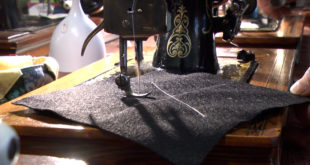It’s well known by road workers and motorists alike that potholes are caused from cracks in the road.
 Those cracks become wet from rain water and condensation, and when that water freezes, it expands, forcing the pavement to break even more, thus causing a pot hole.
Those cracks become wet from rain water and condensation, and when that water freezes, it expands, forcing the pavement to break even more, thus causing a pot hole.
When road crews fill the pothole they use a specially formulated asphalt material designed to be applied without heat.
Bob Klokowski says this cold mix of asphalt has very little regulation pertaining to quality control and the inconsistency results in the failure of the repair.
Klokowski said, “We’re here to talk to the crews about proper patching. How to do things, just some tricks and tips that will help the patches stay in longer. Keep the crews off because with distracted driving, it’s a big deal.”
It was also emphasized that unnecessary repetition contributes greatly to the risk factor of road crews working in the flow of traffic, as distracted driving accidents are on the rise.
HCRC engineer Kevin Harju said, “One of the things that came out of today’s meeting and we’re glad it’s recognized is when you see the crews out patching–slow down. Give them some space. They all have families to go home to. They want to make the road good so they don’t have to come back to fix them. And, they drive the same roads that everyone else is diving. So, the inconvenience is unfortunate when you have to slow down for them, but it’s nice that the road is fixed and we’ll have a smoother ride.”
Yesterday’s seminar taught road commission crews that by utilizing a more consistent mix combined with some new techniques in prepping the repair, public road ways will last longer, stay smoother and reduce the number of job related accidents.
 Keweenaw Report Your Source for Local News and Sports
Keweenaw Report Your Source for Local News and Sports





